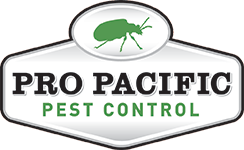The pesticide mark is your best manual for utilizing pesticides securely and viably. The headings on the mark are there essentially to assist you with accomplishing “most extreme” benefits—the irritation control that you want—with the “least” hazard. Both rely upon following name headings and accurately utilizing the pesticide. Peruse the name. Peruse the name before purchasing the pesticide. Peruse the name before blending or utilizing the pesticide each time, and read the name before putting away or discarding the pesticide. Pest Control Essex explains to you the pesticide details and how to choose.
Try not to trust your memory
You might have neglected a piece of the mark guidelines or they might have changed. Utilization of any pesticide in any capacity that isn’t reliable with name bearings and insurances is unlawful. It might likewise be incapable and, far more detestable, hazardous.
![]()
The principle segments of a pesticide mark are portrayed beneath:
1 EPA Registration Number. This number lets you know that EPA has checked on the not set in stone that it tends to be utilized with insignificant or generally safe assuming you follow the bearings on the name appropriately. The number isn’t a blessing or assurance of adequacy.
2 Ingredients Statement or Active Ingredients. Dynamic fixings are the synthetic compounds in the pesticide that kill or control the objective pest(s).
3 Signal Words. The sign words—Caution, Warning, or Danger—show the pesticide’s true capacity for making you wiped out. The word CAUTION shows up on pesticides that are the most un-hurtful to you. A pesticide with the word WARNING is more harmful than those with a Caution mark. Pesticides with the word DANGER on the name are exceptionally toxic or bothering. They ought to be utilized with outrageous consideration since they can seriously consume your skin and eyes.
4 Precautionary Statements. This part depicts the defensive dress, for example, gloves or goggles, that you should wear when utilizing the pesticide. The part additionally lets you know how to ensure kids or pets by getting them far from regions treated with pesticides.
5 Environmental Hazards. This segment tells you assuming the item can cause ecological harm—if it’s unsafe to untamed life, fish, jeopardized plants or creatures, wetlands, or water.
6 Directions for Use. Ensure that the item is marked for use against the pest(s) that you are attempting to control. (For instance, items marked distinctly for termites ought not to be utilized to control insects.) Use just the sums suggested, and follow the headings precisely.
7 First Aid Instructions. The name guides you to assume that somebody is unintentionally harmed by the pesticide. Search for this data in the Statement of Practical Treatment area. The directions are just emergency treatment. Continuously call a specialist or your nearby toxic substance community. You might need to take the individual to an emergency clinic immediately in the wake of giving medical aid. Make sure to take the pesticide mark or compartment with you.
8 Storage and Disposal. Peruse cautiously and follow all bearings for safe stockpiling and removal of pesticide items. Continuously keep items in the first holder and far from kids, in a locked bureau or locked garden shed.

